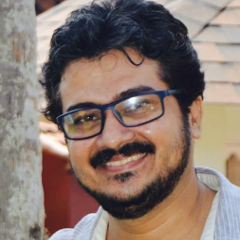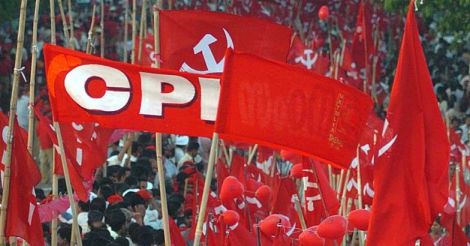Delegates to the CPI’s 23rd party congress can take pride in the party’s track record in transparency as the biennial meet kicks off in Kollam on Thursday. The organisational report to be presented before the gathering is not without some frustrating confessions though.
“Recent elections were a big setback for the Left and the CPI in particular. The party could not win any of the 10 assembly elections, except in Kerala. Our vote share has also reduced. The result in Manipur was shocking,” says the report, which calls for introspection.
“The only solution is to strengthen the organisation. The CPI cannot expect to win an election by just distributing pamphlets,” the document goes.
The Kollam model
The CPI is trying to project Kollam, the venue of the party meet, as a model for comrades from across the country. Kollam has been a stronghold for the CPI, much like Kannur for the CPM.
The CPI has 6.25 lakh members. Of them, 1.30 lakh come from Kerala. Kollam contributes about 30,000 of that share. The party leadership picked Kollam instead of bigger cities like Thiruvananthapuram or Kochi because it wanted to stress on its most powerful district in the country.
The CPI has put forward an ambitious goal before the district leadership - be the No. 1 party in the district. In other words, overtake bigger ally CPM in the district at least.
Both communist parties have four legislators each in the district. The CPI has the most number of panchayat members in the district. The achievement is in stark when considering the fact that the party does not have a single panchayat president in six districts.
Old timers will tell you that the CPM could not win a single seat in Kollam after the split with the CPI. The CPM could only win Kollam after the two communist parties formed into a definite coalition.
In other words, Kollam is a model district for the CPI. If the party could emulate the model elsewhere in Kerala, the state unit would turn a model for the rest of the country.
The CPI has only 21 MLAs all over India. While 19 MLAs are in Kerala, one each comes from Bengal and Telangana. The party is represented by a single member in Parliament - Thrissur MP C N Jayadevan.
Faded glory
The CPI has organised three party congresses in Kerala earlier. The current congress, however, comes at a unique political juncture at the national level. The party congress of the undivided CPI in 1956 laid the foundation for the party’s historic win in the state a year later.
When the party delegates met in Kochi in 1971, a CPI chief minister was ruling Kerala. C Achutha Menon was leading a United Front government. During the 2002 party congress in Thiruvananthapuram, the party was in the opposition in Kerala. Two years later, the CPI stood tall by winning in three of the four Lok Sabha seats in Kerala. The party was a key component in the Left bloc that helped the Congress form the United Progressive Alliance government. The CPI had 15 members in the Lok Sabha.
The party is a shadow of its former self. It can only boast of its participation in the Left Democratic Front government in Kerala. The next general election does not seem to be very exciting for the party cadres.
The shame of losing the national party status over revolutionary ideals is unmistakable in the organisational report. “The CPI believes in parliamentary democracy. Our party does not act against the law. We have to win elections. We have to focus on winning no matter what political tsunami we face.”
The CPI is ready to work with the Congress. It wants the CPM to go soft on the Congress in the larger interest.
While CPM politburo member Prakash Karat claimed that the document he presented was the official document with the backing of a majority and the line proposed by general secretary Sitaram Yechury belonged to a minority, CPI state secretary Kanam Rajendran was in a meeting with his party colleagues.
Reacting to the televised comment, Kanam said, “If the minority were so insignificant, the 32 comrades did not have to walk out of the CPI national executive at the Thiagaraja Hall in Kolkata on April 11, 1964. They could have just continued as a minority among the 147 members.”
The CPM was the result of a rift in the CPI over several issues including cooperation with the Congress yet the party is going through an internal tug of war over the morality and practicality of allying with the Congress. Ironically, Left unity now hinges on the communist parties’ willingness to work with the Congress.
The CPI is not free from contradictory stands either. Even as the party advocates for a cooperation with the Congress at the national level, it vehemently opposes the CPM’s overtures to the Kerala Congress (M) in the state.

























